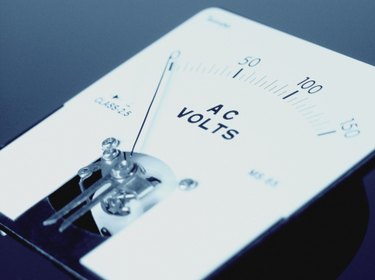
A potentiometer, or "pot" is a variable resistor with three terminals and a shaft that can be turned in either direction. The middle terminal is called the wiper. The shaft is connected to the wiper. Using one of the end terminals and the wipers, create a variable resistor to control or adjust current. Use all three terminals to create a voltage divider to control or adjust voltage. The following exercise illustrates how to wire a potentiometer to control voltage and current.
Adjust Current
Video of the Day
Step 1
Connect one end of the limiting resistor to the positive terminal of the power supply.
Video of the Day
Step 2
Attach the other end if the limiting resistor to one of the fixed terminals of the potentiometer.
Step 3
Link the positiver probe of the current meter to the wiper of the potentiometer.
Step 4
Conjoin the negative probe of the current meter to the negative terminal of the power supply.
Step 5
Rotate the shaft to vary the potentiometer resistance. Notice that the current meter value varies also.
Adjust Voltage
Step 1
Attach the positive terminal of the power supply to one of the fixed terminals of the potentiometer
Step 2
Couple the other fixed terminal of the potentiometer to the negative terminal of the power supply.
Step 3
Connect the positive probe of the volt meter to the wiper terminal of the potentiometer.
Step 4
Affix the negative probe of the volt meter to negative terminal of the power supply terminal.
Step 5
Rotate the shaft and notice that the volt meter value varies also.